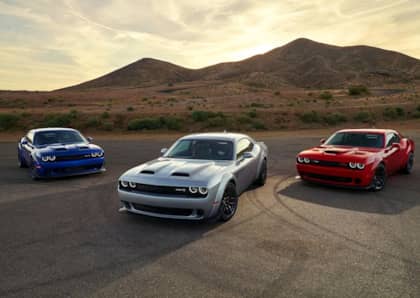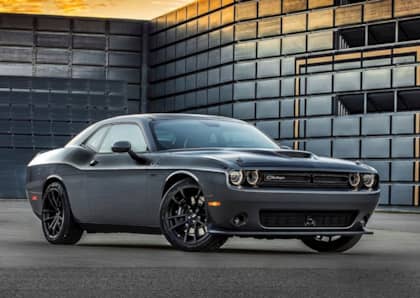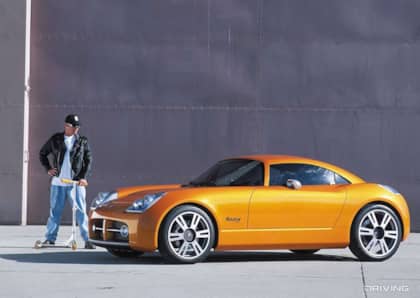Overlooked Performance: 2003-2005 Dodge Neon SRT-4
In the world of sport compact cars, the Dodge Neon SRT-4 can lay perhaps the greatest claim to being the heir apparent to late comedian Rodney Dangerfield. Despite the phenomenal potential of the platform, surprising levels of factory speed support almost from day one and an incredibly low purchase price—especially now on the used market—the turbocharged version of Mopar's entry-level offering still "can't get no respect" from performance fans outside of a small, dedicated cadre of Neon lovers.
Taking It to the Streets
The genesis of the SRT-4 project can be traced all the way back to the SEMA show in the late-'90s. At the time, Chrysler was looking for ways to expand its performance car offerings past the Viper, which was well-suited as a halo model but priced out of reach of the majority of customers. Tom Gale, the design exec directly responsible for both the Viper and the earlier Dodge Stealth, was inspired by the energy of street culture embodied at the show, and realized that if Chrysler could tap into that wave of enthusiasm it would probably find itself awash in profit.

The mission Gale put before his team, which included Marques McCammon, Dave Chyz, and Marc Musial, was simple: take the lowly, but popular, Dodge Neon sedan and do whatever it took to make it competitive with import performance rivals like the Honda Civic Si and the Nissan Sentra SE-R. It wasn't an altogether unreasonable request. Dodge had already built the lightweight ACR or "American Club Racer" version of the Neon, which featured a tuned suspension system aimed at the autocross crowd (with later models adding goodies like Koni adjustable shock absorbers), and the car had developed a reputation for nimble handling.
Initial prototypes for the quickened Neon made use of a supercharger to boost its four-cylinder output from the low 130s to just over 200, and after four months of development the "Neon SRT" (Street & Racing Technology) debuted at the SEMA '99. It took several more concept versions of the car, however, plus the intervention of the Specialty Vehicle Engineer team (responsible for the Viper and the Plymouth Prowler, and later renamed Performance Vehicle Operations, or PVO), before Chrysler's bean counters would let the project proceed towards production as a 2003 model. Helping to get the Neon past this hurdle were people like John Fernandez, PVO's director, and program manager Brad Dotson, with the latter lending his SCCA racing expertise to the effort.
The years of development time paid off nicely for Neon SRT-4 customers. PVO convinced Dodge that moving to the same 2.4L four-cylinder engine found in the Chrysler PT Cruiser would pay dividends, and a turbocharged version of this motor put down 215 flywheel horsepower and 245 lb-ft of torque at 14 psi—at least, on paper. It wasn't long before dyno-using tuners were discovering that the SRT-4 was actually churning out as much as 223hp and 250 lb-ft of twist at the wheels, which underscored just how underrated the motor was from the factory.
PVO also added a beefier transmission, clutch and half-shafts to the equation, to go with Tokico shocks, an upgraded chassis and thicker sway bars. Bigger brakes, a look-at-me wing and 17-inch rims rounded out the package, with interior updates including sport seats, carbon fiber-look trim, a boost gauge and a cue ball shifter. Interestingly, Dodge sold the SRT-4 without any mufflers, relying on resonators to keep its dual exhaust from waking up the neighbors.
The following year would see PVO transform into SRT, taking its name from the very Neon it had birthed into the world—and that wasn't the only change afoot. The Dodge SRT-4 lost the Neon appellation from its badge but gain a limited-slip differential, stickier tires and larger fuel injectors that helped boost reported power to 230hp and 250 lb-ft of torque (aided and abetted by more aggressive engine management). 2005 would be the final year for the SRT-4, heralded by a special ACR model that included unique 16-inch BBS wheels, a lower ride height, a 19 mm rear swaybar and adjustable Tokico Illumina shocks.
Making Waves
The impact of the Dodge Neon SRT-4 was immediate. Out of nowhere, here was a sub-$20k compact that weighed less than 3,000 lbs and could sprint to 60 mph in roughly five-and-half seconds, while also holding things together on a slalom course or autocross circuit.

Dodge would further up the ante by making a number of performance packages available for the SRT-4 right from the dealership. Available in Stage 1, 2 and 3 iterations, it was possible to tune the car to the point where it ran down the quarter mile in the 12 second range with a trap speed of 110 mph—all without sacrificing your warranty. On 100 octane (yes, it could be had with multiple octane tunes), a Stage 3 SRT-4 threw down 355hp and 365 lb-ft of torque, which was more than enough to embarrass a Mustang GT of its era. Aftermarket tuners regularly took the SRT-4 even further than that, making it one of the most potent front-wheel drive drag weapons of the early-2000s.
On the competition side, the SRT-4 caused a stir in SCCA ProRally, SCCA Speed World Challenge, NASA Us Touring Car, One Lap of America and even the Bonneville Salt Flats, where it would claim the title of world's fastest four-cylinder car. All that on-track success translated into fantastic sales for the model, which would move more than 25,000 units during its three years of existence—almost 10 times what Dodge had predicted—disappearing only when the Neon's decade-old platform was retired after 2005.
Faded Glory
Today, the Dodge Neon SRT-4 (or just SRT-4) is somewhat of a rarity. While SRT would go one to produce popular Mopar models like the Dodge Challenger Hellcat, the Jeep Grand Cherokee SRT and eventually the final generation Viper, the vehicle that replaced the hopped-up Neon—the Caliber SRT-4—never enjoyed the same level of performance or popularity, which cast somewhat of a shadow over its predecessor.
Scarcity hasn't translated into high prices, however, and the SRT-4 has remained surprisingly affordable given its potential. Finding one that hasn't been modded isn't easy, of course—factory or otherwise—but it remains an under-the-radar platform for budget-oriented speed junkies looking to walk a different path.











